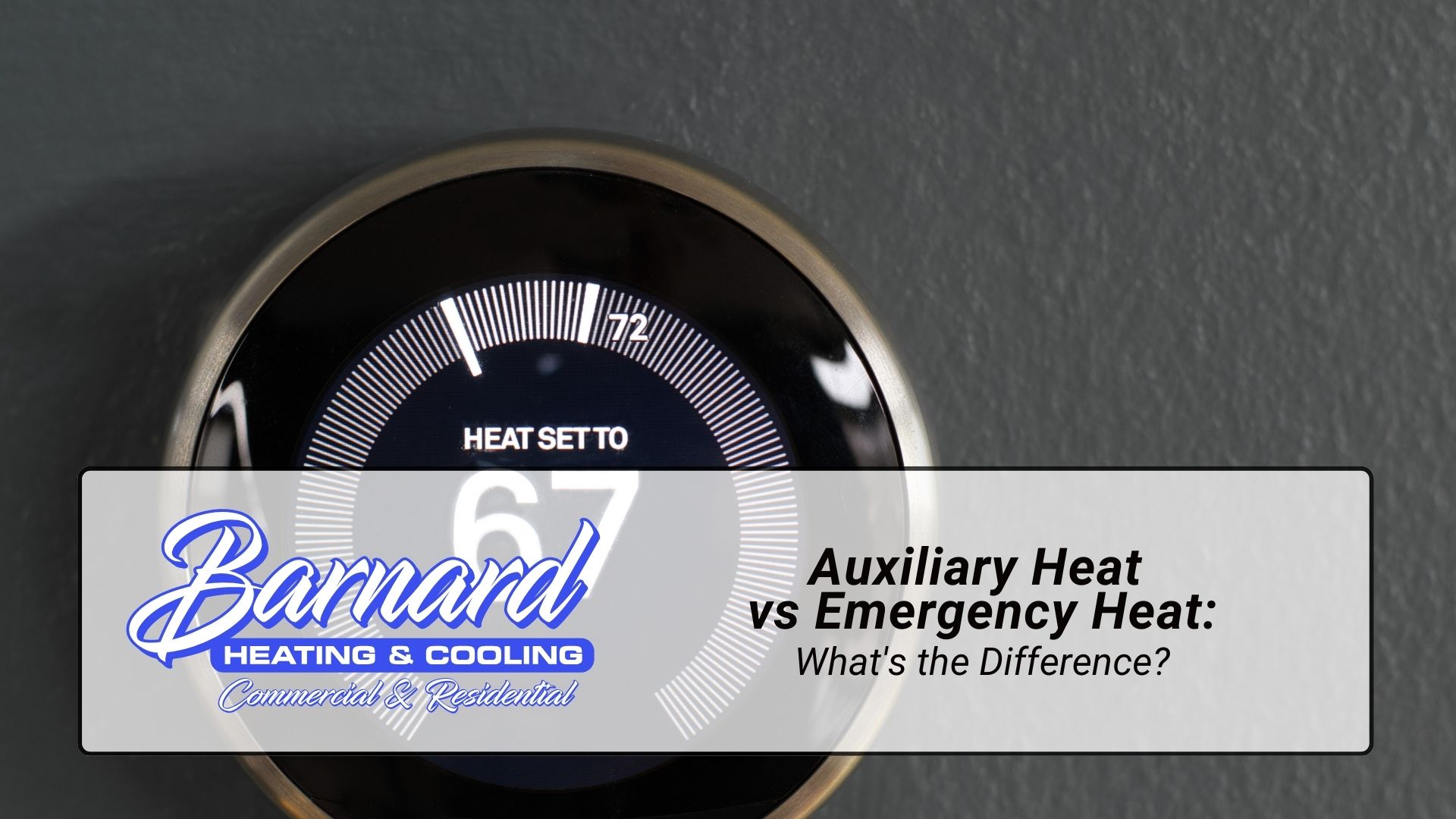As a homeowner or business owner, understanding your heating system — especially when it comes to the functions of your thermostat in cold temperatures — is crucial for maintaining a comfortable and energy-efficient environment. A common question that arises is: "What is auxiliary heat?". In this article, we'll delve into the world of auxiliary heat and how it differs from emergency heat, aiding you in making informed decisions about your energy efficiency, heating bills, and backup heating sources.
What Is Auxiliary Heat?
Auxiliary heat, often visible as a setting on your thermostat, refers to a secondary heat source that kicks in when your primary heating system, usually a heat pump, can't keep up with the indoor temperature demands. This situation typically arises during extremely cold outdoor temperatures when the heat pump alone can't maintain the desired ambient temperature.
Auxiliary heat utilizes electric resistance heating, which is less energy-efficient but provides the necessary boost to keep your indoor spaces cozy. Understanding this function is essential as it can impact your energy bills, especially during harsh winter months.
Auxiliary Heat on Thermostat: When Does It Activate?
Your thermostat plays a vital role in managing auxiliary heat. When the indoor temperature drops significantly below the thermostat setting, usually because of a drastic drop in outdoor temperature, the thermostat activates the auxiliary heat. This function serves as a backup heat source so that your living or working space remains comfortable, even during a cold snap.
Auxiliary Heat vs. Emergency Heat: Spotting the Differences
While both auxiliary mode and emergency heating serve as backup heating options, their purposes and functionalities differ significantly.
Auxiliary Heat:
-
- Secondary Heat Source: Acts as a support to your heat pump during regular operation
- Automatic Activation: Turns on automatically when the heat pump can't maintain the set thermostat temperature
- Efficiency: Less efficient than a heat pump but more efficient than relying solely on emergency heat
Emergency Heat:
-
- Backup Heating: Used when your heat pump is malfunctioning or during maintenance by an HVAC professional
- Manual Activation: Requires you to switch to this setting on your thermostat manually
- Use Case: Ideal for situations like a heat pump repair, where the primary heat source is temporarily unavailable
Understanding these differences is crucial for efficient thermostat setting management and preventing unnecessary strain on your heating system.
Why Is This Important for Your Home or Business?
Knowing when and how to use auxiliary and emergency heat can significantly impact your comfort and utility bills. Frequent use of electric resistance heating can lead to higher energy costs. Monitoring your heat pump's performance and scheduling regular maintenance services is essential to avoid unexpected switches to these less efficient heat sources.
If you notice your auxiliary heat indicator turning on frequently, it might be a sign that your outdoor unit is struggling. This could indicate that it's time for a professional inspection or potential heat pump repair.
Stay Warm With Barnard Heating and Cooling
Understanding the functions of auxiliary heat versus emergency heat is vital for maintaining a comfortable and energy-efficient environment in your home or business. Remember, while auxiliary heat provides a necessary boost to your indoor temperature to a comfortable temperature, it shouldn't replace regular maintenance and care of your primary heat sources. If you're experiencing frequent switches to auxiliary or emergency heat during cold weather, contact Barnard Heating and Cooling for expert advice and services to ensure your heating system runs smoothly and efficiently.
